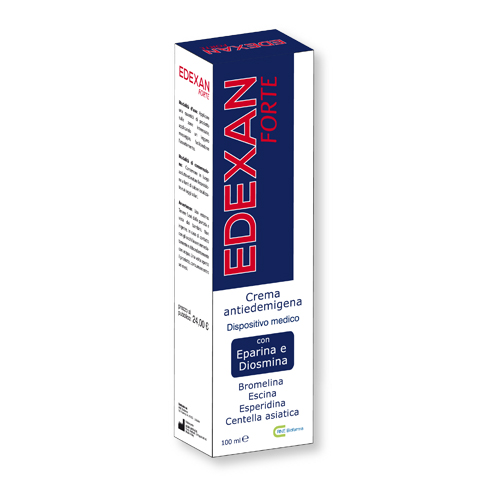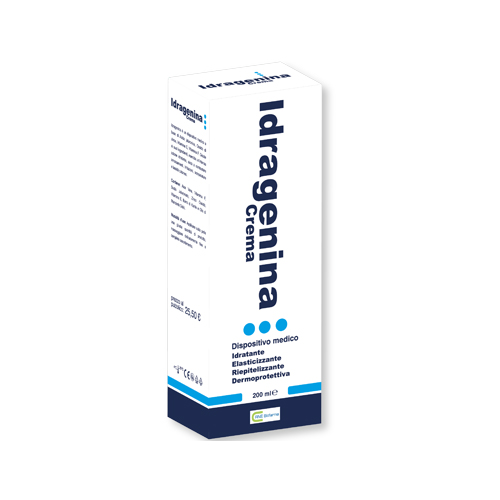A line of products designed to provide a gentle approach to the treatment of vascular inflammation and infections, for care, topical and systemic treatment of ‘Circulatory and microcirculatory failure, venous stasis, edema, of Ulcers and of Diabetic Foot
All products of this line are constituted by an association of active ingredients, and optimal dosages to ensure a rapid therapeutic effect.

Package: 30 tablets of 1300 mg
Recommended dosage: 1-2 tablets a day
It is a product containing Bromelain 2500 GDU, Hesperidin, Diosmin, Escin and Asian Centella whose association promotes a strong anti-edema action which may be useful for restoring the physiological functions of the venous microcirculation.

Package: Tube of 100 ml
How to use: Apply the right amount of cream, one or more times per day, on the affected areas. Gently massage until completely absorbed.
It is a product containing Bromelain 2500 GDU , Hesperidin , Diosmin, Escin , Asian Centella and Heparin whose association promotes a strong anti-edema action with a prolonged effect cryotherapy, which can be useful in alleviating the feeling of heaviness, swelling and pain in the lower limbs in the venous microcirculation alterations.
Package: 20 tablets of 1300 mg
Recommended dosage: 1 tablets a day
It is a product containing Palmitoiletanolamide (PEA), White Willow e.s., Harpagophitum procumbent e.s. and Ornithine KG whose association promotes a strong antioxidant action for restoring physiological cellular functionality.
Package: Bottle of 250 ml
How to use:Apply a proper amount of product on wet hair. Massage and rinse.
Eudermic oil-based cleanser containing Sweet Almond Oil, Jojoba Oil, Vitamin E, Vitamin F, Chamomile, Unsaponifiable of Olivo, Omega 3 (EPA and DHA) and Polidocanol with a moisturizing, soothing, normalizing, anti-inflammatory and anti-itching action.
Package: Bottle of 50 ml
Does not contain PARABENS, SILICONE DERIVATIVES
How to use: Apply to the affected area by massaging gently.
Ano-genital gel containing Hyaluronic acid, Vitamin E, Vitamin A, Aloe, Ribes nigrum, Chamomile, Calendula, Lavanda, Lactic acid, Glycyrrhetinic acid, Polidocanol e Methyl lactate with a re-epithelizing, anti-inflammatory, anti-itching, soothing, moisturizing, dermoprotective, lubricating and refreshing action.
Package: Tube of 50 ml It is a cream containing Colloidal silver, Hyaluronic acid, Usnic acid with dermoprotective action.
Feristat crema – Medical Device
How to use: Apply the product to affected areas
Package: Airless of 100 ml
How to use: Apply enough product to affected areas
It is a cream containing an high concentration of Zinc Oxide, also containing Vitamin E, Aloe vera and Jojoba oil useful in all states of dermal irritation with a dermoprotective action.

Package: Tube of 200 ml
How to use: Apply to skin the right amount of product. Massage gently until completely absorbed.
It is a product containing Hyaluronic Acid, Zinc Oxide, Vitamin E, Vitamin F, Ceramides I III and IV, Sweet Almond Oil and Shea Butter, which is able to carry out an intense moisturizing multifactorial, elasticizing epithelizing, skin protective action.